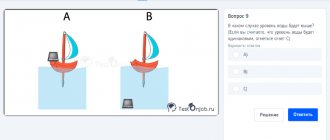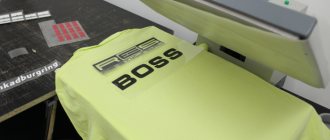Business relevance
A 3D printer is a device that creates three-dimensional models of any given shape. To do this, you need to build a three-dimensional image in a special computer program.
When such devices went on sale, they had many shortcomings - low printing speed, inaccurate recreation of a given object. This did not allow them to be used in commercial circuits. But today everything has changed. Surgeons from Italy use 3D printers to print copies of patients’ fractures; in the USA they are needed to carry out space missions.
But most often this device is used for commercial purposes, for entertainment. Today, many companies offer to recreate copies of various objects, including exact mini-copies of people.
The use of 3D printing of human figures in the advertising industry
Of course, the advertising industry has traditionally taken a leading position in attracting innovation to its service. 3D printing of human figures has become the basis of several high-profile advertising campaigns in Spain, Germany, and the UK, during which passers-by on the streets and visitors to shopping centers were asked to quickly create their own miniature on a 3D printer.
But the scope of advertising use of this technology is much wider:
● Figures of real company employees in company uniforms can form a static installation. ● Can be a participant in believable animated advertising. ● Given as a keepsake, as souvenirs, they will represent a powerful motivation for a common cause and common success. ● 3D printing of human figures, in addition to the presentation of 3D models of industrial, construction, and social objects, can bring liveliness and dynamics to the presentation of projects. ● Using a 3D printer, you can create not only mini copies of real people, but also transform familiar replicated images of famous sculptures. For example, dress the Venus de Milo in the costume of a stewardess of an advertised airline, and use a mini copy of Rodin’s sculpture in advertising women’s accessories.
Manufacturing technology
It is better to place a scanning office in separate buildings or small departments of shopping centers, in places with high traffic. The production studio itself can be located in remote locations with low rental costs.
Scanning time depends on the equipment; new technologies take no more than 10 minutes. During this process, a 3D model of a person is created on a computer.
After this, the layout is transferred to the designer, who works remotely in his production studio. The sent model generates files for a printer that can print figurines of the given parameters. Several models can be loaded onto the printer at a time and produced simultaneously.
At the end, the figurine is varnished and packaged, sending it to the office where the order came from or to the client’s address.
Stages of creating three-dimensional copies of a person
High-quality and reliable 3D printing of people actually requires several preparatory stages. ● On the first, a full-scale 3D scan of a person is performed at full height ● On the second, a copy of the three-dimensional model is carefully processed ● On the third, the scale is reduced and the figure is printed.
The technology also involves a number of post-printing processing measures. The figures may require surface sanding, painting or tinting, freeing them from auxiliary elements - fasteners, additional parts, coating with protective varnishes, finishing agents.
Market analysis
In Russia, this business idea is just beginning to develop. Let's look at the leading companies that provide the opportunity to buy 3D figurines of people:
- SIMPLY3D – figurines are offered using Mcor technology – the quality of the material resembles wood. For a figurine measuring 20 centimeters you need to pay from 8 thousand rubles.
- Top 3D shop – production of plaster and paper figurines, cost 7-10 thousand rubles;
- 3D copy me – prices from 5500 rub. (per figurine 15 centimeters) up to 19,700 (figurine 30 centimeters).
The 3D printing industry has experienced great changes over the past 3 years. This happened due to the improvement of technology that makes it possible to recreate copies of people and objects. According to expert forecasts, the 3D printing market will reach $6 billion in 2017, and $11 billion in 2021.
The market for consumer services performed on a 3D printer is growing the most. In Russia, the number of companies providing 3D printing services, as well as sales of specialized equipment, is constantly growing. Today there are more than 250 of them (providing services to individual clients and small businesses). Every year such organizations collect more than 8 billion rubles. income, providing more than 2,000 jobs.
Methods for obtaining the necessary sources for 3D printing
To recreate the image in a 3D model, try to get pictures from eight angles in a circle, where the angle increment will be 45 degrees. This information will be useful to those who are planning to organize a surprise related to the secret production of a mini-copy of a person on a 3D printer. And even if a spontaneous photo shoot provides less information about the image than scanning, the result will still be recognizable.
Our company is ready to offer all interested people 3D human printing services, as well as business cooperation in this area. Our technical equipment allows us to implement not only our own, but also third-party projects, providing a successful launching pad for the take-off of your business. We will be happy to assist you in creating a three-dimensional human copy and mutually beneficial cooperation.
Financial plan
Let's consider approximate calculations for opening a point (accepting orders and scanning) in a shopping center and production studio on the outskirts of the city.
Start-up costs:
- Equipment purchase:
- hand scanner – 200 thousand rubles;
- 3D printer for printing human figures – 2.94 million rubles;
- business registration – 10 thousand rubles;
- software installation – 12 thousand rubles;
Total - 3,162,000 rubles.
Monthly expenses:
- rent – 180 thousand rubles;
- purchase of consumables – 75 thousand rubles. (no more than 10% of the cost of finished products);
- wage fund (2 employees) – 60 thousand rubles;
- promotion costs – 150 thousand rubles;
- tax, utility and other expenses - 180 thousand rubles.
Total – 645,000 rub.
If every day the studio collects 5-6 orders with an average cost of 7,000 rubles, the monthly revenue will be 910,000 rubles (5 orders x 26 working days x 7,000 rubles).
The profit in this case will be 265,000 rubles. The payback period of the project is 1 year.
The above calculations are approximate. This business depends on the season. As practice shows, before the holidays the number of orders simply goes through the roof, since many people want to give a gift to their relatives; on ordinary days, not a single order may be received on the day. You need to be prepared for this, so you should include additional expenses for maintaining the studio in your main budget. Also keep in mind that such services are new, and the unfamiliar are not always in high demand and promotion will take time.
Modern technologies are constantly evolving. Particular attention should be paid to the 3D printing market. In recent years, many models of 3D printers and scanners have appeared that can be used to organize a profitable small business. If you are looking for the best small business ideas of 2016-2017, then pay attention to such a new direction as making three-dimensional copies of a person in the form of figurines. Surely every person will want to get an exact copy of himself. This souvenir will be an excellent gift for any occasion.Business information:
- Starting investment – 3-4 million rubles.
- Monthly profit – 200-300 thousand rubles.
- The payback period for the project is from 1 to 2 years.
To organize this business, a considerable amount of start-up capital is required - in the amount of 3-4 million rubles. This is explained by the fact that equipment for making three-dimensional figures is expensive (taking into account the high exchange rate of the dollar and euro).
No. 1. Who are the clients of such services?
Completely different people can become clients. Every person would not mind receiving an exact copy of himself in the form of a three-dimensional toy. Most often, such figurines are given for various celebrations and holidays, for example, weddings, birthdays, etc.
No. 2. The main stages of organizing a business
It is necessary to prepare a thorough business plan, which should include the main stages.
- Market analysis for competition (I am sure that there are no such companies in small and medium-sized cities).
- Compiling the financial costs of starting a business (this stage should include the cost of renting premises, costs of purchasing equipment, etc.).
- Purchase of equipment.
- Supply of consumables for the production of three-dimensional human figures. At this stage, you must decide from what material you will make the figures. The two main materials used are plastic and gypsum.
- Recruitment.
- Finding suitable office space and equipment placement.
- Promotion of services using advertising.
Search for a location
To reduce advertising costs, you should choose places with high traffic. For example, you can rent a spacious department in a shopping center. Premises in separate buildings are also suitable. If your office is not located in a very public place, then more significant investments in advertising will be required, but this is only at first.
What does the process of creating 3D human models look like?
A special scanner scans a person, during which an exact copy of him is displayed on the computer. The process of creating a three-dimensional figure takes about 5-10 minutes. It all depends on what equipment you are using. New models cope with this task in 5 minutes. Then the 3D model is sent to the designer, who refines the model, eliminates all defects and prepares materials for printing the future figurine. Modern printers can print figurines from different materials. The last stage is that varnish is applied to the figurine and sent to the client. For the Russian market, this is a truly innovative idea that is just beginning to develop. An ideal option for organizing a small business with high profitability and low competition.
Costs of organizing a business to create 3D figurines of people
Approximate starting investments (numbers may vary depending on the region):
- Business registration – 5-10 thousand rubles.
- Rent of premises – 20-30 thousand rubles.
- Handheld scanner – 150-200 thousand rubles.
- 3D printer for printing human figures – 2.5 – 3 million rubles.
- Setting up equipment and installing all the necessary programs for creating and processing figures - 10-20 thousand rubles.
- Purchase of the first batch of consumables – 100-200 thousand rubles.
- Salaries for employees. The office will require only two employees - a manager to work with clients and a designer, whose responsibilities include creating human figures. Monthly costs for paying wages will be 60 thousand rubles.
- Monthly advertising costs are 20-30 thousand rubles.
The approximate costs of setting up a business will be 3,500,000 rubles (if you choose the cheapest printer model for printing human figures).
Equipment
The modern market today offers a fairly wide range of equipment from various manufacturers.
| Model name | Characteristic | Description | Price |
| 3D Systems ProJet 360 (ZPrinter 350) | Works using the technology of gluing powder based on plastic or gypsum | Rapid production of a model according to a three-dimensional drawing, allows you to create complex structural models | 2415800 rubles |
| Mcor IRIS | Powered by Mcor technology | An ultra-economical printer that uses a4 office paper as consumables | 3400000 rubles |
| 3D Systems ProJet 260C (ZPrinter 250) | The main feature is color 3D printing, work with gypsum-based composite material, weight – 165 kilograms | Prints an object in 64 colors, can produce several models simultaneously | 2308800 rubles |
| 3D Systems ProJet 660Pro (ZPrinter 650) | Full-color 3D printer, works using layer-by-layer technology and coloring of composite powder (gypsum) or plastic, weight – 340 kilograms | High printing speed, high tonality, 390 thousand colors, silent operation | 5465700 rubles |
Another device that is necessary for 3D printing a copy of a person is a scanner. Among them are:
- handheld optical scanner (professional models), which allows you to scan objects and securely fix them. But since the work is done by hand, the scanning process will be very long (from 10 to 30 minutes);
- booths with cameras (40-55 pieces) mounted around the perimeter, which makes the shooting process quick.
One of these booths is Texel Portal - a device for providing 3D scanning of a person, as a result of which color models are formed. Using the device is easy, since most processes are automated. As a result, the scanner provides a ready-made sample for using the data and further printing. Such a device costs 1.8 million rubles.
Hand-held optical scanners cost 150-700 thousand rubles. Video - Scanning with a 3D scanner Artec Eva:
3D figures from photo or 3D scan to order
How is a 3D figurine created?
The creation of human figures - 3D mini-copies of a person - occurs in several stages. The first stage is 3D scanning in the company’s professional studio and a simultaneous photo shoot. At this stage, a digital copy of who is the prototype is created for the subsequent production of a 3D figurine of a person. The remaining stages of processing, preparation for printing, printing itself and post-processing are done without the need for the client’s presence.
What is the 3D figurine made of?
A 3D copy of a person is made of a 21st century polymer composite material based on gypsum. It is hypoallergenic and does not emit toxic substances. It is hard enough not to be accidentally broken and does not require special care. A 3D human figurine is somewhat fragile, but exactly to the same extent as any other mineral or even cast iron is fragile. Of course, if it falls from a great height, it can break, however, its base is stable enough to prevent this from happening.
How long does a scan take?
On average, the scanning process takes no more than 5 minutes, during which the person being scanned must try to remain motionless. Therefore, we recommend that you come up with a position in advance in which you would like to create a 3D figure and would be comfortable to be in during the entire scanning time. Expect to spend about 30 minutes in the company's studio. This includes time to fix your hair, choose the best pose, take a few scans and solve other organizational issues.
What is the recommended look to create a 3D figurine?
The main thing is to look so that you want to look at yourself again and again! It is advisable to avoid shiny things and accessories. We do not recommend doing hairstyles that are too curvy or voluminous. Wear bright, colorful clothes with patterns and pictures. Avoid solid colors, especially black. Of course, for bright images embodied in a 3D figurine, accessories are recommended that could emphasize individuality. These may include any elements of sports or other equipment, business or professional items and objects. Unleash your imagination: 3D figurines of people allow them to be whoever they want, while remaining themselves. Fantasy elements are welcome (hats, capes, boots, accessories, etc.).
Can I bring children for scanning and at what age?
It is known that small children, on average up to 4 years old, often cannot sit still for several seconds, which greatly complicates the scanning process and increases the work time. However, this does not mean at all that we do not love children or do not know how to work with them. Quite the opposite! For us it is a pleasure and always an interesting, new challenge. However, we recommend that children order 3D printing of figurines based on photos. We are always waiting for our little clients in the company's studio for an amazing attraction - creating a 3D figure!
Will the 3D figurine fade over time, or will the color rendition be distorted?
Thanks to modern technology for integrating color directly into the structure of the material at the printing stage, 3D human figures will not fade or change their colors over time. The main thing is not to wet them or expose them to sunlight.
How vibrant and lifelike are the 3D figures?
Our technology for producing 3D human figures offers 6 million colors to convey vivid and realistic images. The company strives for maximum realism of images, however, a 3D figurine prepared for printing can be adjusted both in color and in appearance, taking into account the wishes of the customer. Today, the technology used by the company for creating miniature 3D copies of a person is the most advanced and allows you to create the most detailed 3D figures.
If the figure is lost or damaged, will it be possible to order a copy?
The company has the ability to produce any number of 3D figurines of people to order in St. Petersburg in any scale at the customer’s request based on an existing virtual model obtained from 3D scanning.
Is 3D scanning dangerous?
Scanning is absolutely safe, since the 3D scanner does not emit anything during operation. The blinking light you see is a normal flash. For the person being scanned, everything is similar to the process of photographing, only instead of one camera there are two, and not one flat frame is recorded, but 15 three-dimensional surfaces every second.
A million from 3D: how to make money on cheap 3D models
The commercial version of the scanning box costs only a few thousand dollars - ten times less than professional systems on the market. In addition, the Cappasity system is distinguished by the ease of producing a 3D model. “Previously, you had to first photograph an object, and then go to an artist so that he could make a three-dimensional copy of it within two days,” explains Popov. At CES, the development made a splash - approximately 150 companies became interested in the Cappasity product.
Cappasity also developed its second product, the free Easy 3D Scan program for making ready-made 3D objects using cameras built into ultrabooks and tablets, with the support of Intel. The software is designed primarily for small and medium-sized businesses - for example, retailers, the shoe industry or souvenir manufacturers. More and more online stores are using 3D models of their products to advertise, and the price of 3D photography for large orders can reach up to half a million rubles. With Easy 3D Scan, a company can create ten 3D models for $50 a month and pay an additional $3 for each subsequent one. “What is the interest of a three-dimensional model: the longer a person looks at it, the higher the likelihood that he will make a purchase. Our solution is fully automated; press the button once and the three-dimensional image is ready,” explains Popov. The resulting models can be used for printing on a 3D printer.
Read on RBC Pro
Out of spite Kawasaki: how loyalty defeated competence in Russia Billionaire downshifter: how a mortgage seller got rich by comparing prices So says Gref: there are few people with a “nuclear engine” inside Hiring with a demotion: is it worth hiring a former manager for a linear position
The release of Easy 3D Scan is scheduled for November, and the release of the first industrial batch of scanning boxes is scheduled for mid-2020.
Scanning in numbers
$350 thousand on developing its technology
$2–15 thousand — the cost of the commercial version of the Cappasity scanning box, depending on the configuration
9% per year - this is how the 3D scanning market will grow until 2020
The 3D scanning market will reach $3.7 billion
Source: Cappasity data, Markets & Markets, Allied Market Research
3D for people
3D modeling opens up wide opportunities in the retail and footwear industry, Popov is sure. According to him, the 3D industry is moving towards virtual fitting rooms, where a person will be automatically measured to create perfectly fitting clothes. “For example, this year the startup Volumental and Intel demonstrated their latest development - a stationary kiosk with a computer and an Intel RealSense F200 camera at foot level. Using their technology, it will be possible to obtain a so-called electronic foot passport, and our scanning box will allow us to display all shoe parameters,” explains the entrepreneur.
In July 2020, Cappasity attracted $100 thousand investments from a business angel found through the StartTrack platform (Popov did not disclose his name and details of the transaction). “By that time we had a model of the scanning product ready, we were approaching its beta version. The investor was able to come and see on a laptop how an object was scanned and manufactured,” recalls the company’s founder. The investor's decision was also influenced by favorable reviews from Intel.
Now the startup is looking for another $500 thousand. According to Popov, for full-fledged work the team needs $150 thousand for six months, and Cappasity cannot now engage in third-party projects, since it is busy developing the core technology. The company is currently in an operating loss, but Popov expects to bring it into the black in the second quarter of 2020.
VIEW FROM THE OUTSIDE
“The Cappasity market is much larger than 3D model creation.”
Konstantin Shabalin, CEO of the StartTrack investment platform
“The Cappasity project is at that attractive stage of development when the idea is already turning into a business, strong partners and prospects have appeared, but the value of the company and management’s appetites have not yet become significant. Cappasity's valuation for a previous deal that went through our platform was less than $4 million. We believe that in no later than three years the company's net income will reach $12 million per year and revenue will reach $18 million per year.
Cappasity is one of the rare projects in Russia that initially builds its business for the global market, relying on consistently built relationships with the North American division of Intel. Intel sees Cappasity as one of the key developers of software for its new 3D cameras, which it is bringing to the mass market this year.
Another good investment signal is a pilot project between Cappasity and a large Russian e-commerce company, in which Cappasity technologies are used to accurately measure shoe and clothing sizes, since there is a known problem of discrepancies between the same sizes from different manufacturers. This project shows that the potential market for Cappasity's services is much larger than just creating 3D models."
“The market is promising, but the consumer has the final say”
Marianna Svetlosanova, Senior Marketing Manager, Intel Software Developer Support Division
“Intel actively supports companies that are not afraid to experiment with new technologies. 3D scanning is one of these areas; it has not yet entered the mass market, but it certainly attracts end users with its capabilities. Cappasity monitors market innovations and puts them into practice. The resulting product is a synergy of technology and practical application.
We assess the 3D scanning market as one of the most promising areas, but the final word remains with the consumer. You need to understand that technology alone is not enough: you need a product that is understandable and user-friendly, and startup solutions often help create it. We help Cappasity not only by giving them access to Intel technology, but we also support them from a marketing perspective.”
“The project looks attractive to investors”
Victor Osyka, manager of the Almaz Capital venture fund
“The project looks promising for the medium to long term, especially when Intel RealSense 3D sensors in consumer devices achieve several orders of magnitude higher penetration. The startup looks attractive for investment: firstly, it has a strong founder, secondly, the project itself is made on the platform of such a giant as Intel, and thirdly, it is focused on the global, not just the Russian market. In addition, the popularity of 3D models will increase as 3D printers become more widespread: using Intel sensors built into smartphones, tablets and laptops, people will scan surrounding objects for subsequent 3D printing.”











